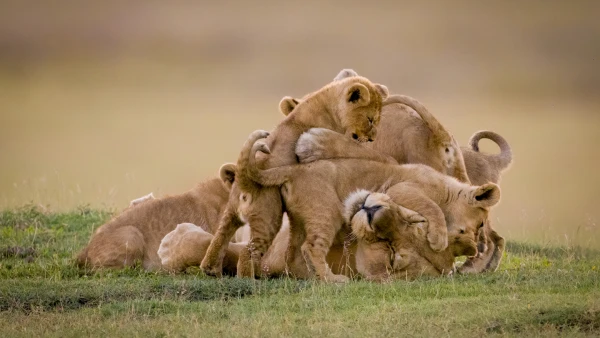
Who raises lions, why female orcas dedicate their lives to caring for a single offspring, and who are referred to as exemplary parents in the wild.
In the animal world, there are no textbooks or schools, but there are harsh life lessons that parents pass on to their children. Teaching hunting, migration, communication, and camouflage is a matter of species survival.
Lions
In lions, the entire pride is involved in raising the cubs. The cubs often play tag and ambush, practicing hunting tactics. Initially, the mother brings them injured or small animals to help them learn to handle prey. Gradually, the lessons become more complex, and young lions begin to accompany adults on real hunts.
The pride operates under strict discipline: for example, adults approach the prey first, while the young patiently wait their turn. The cubs also learn this family hierarchy from an early age, living in a "society" that follows its rules. Meanwhile, the mother teaches the cubs to climb trees — this skill can also be useful in hunting.
Orcas
Orcas (or should it be written as "killer whales"?) create one of the most complex social systems in the animal world. These are very intelligent animals, and they constantly learn from each other, especially from their mother, who is the head of the family. In Antarctica, orcas collectively create waves to wash seals off the ice, and off the coast of Argentina, they master the dangerous technique of beaching themselves.
Mothers also pass on knowledge of migration routes (previously, we wrote about how birds understand where to fly), feeding grounds, and family dialects, as each group has its own language. Studies show that female orcas often dedicate their lives to caring for a single offspring. In contrast, the mothers of daughters continue to produce offspring.
Scientists link this phenomenon to an evolutionary survival strategy: the clumsy and massive male finds it difficult to obtain enough food — the mother helps him by catching and processing salmon. Research notes that after the mother’s death, her adult son often dies within a few years, as he struggles to find food on his own.
Cranes
Migration is one of the most complex skills in the animal world. Young cranes memorize the route by flying strictly behind older relatives. Otherwise, they can get lost.
Sometimes humans intervene in the learning process. They lead a flock of young cranes raised in captivity and show the birds the migration route using a hang glider. The chicks perceive the pilot as a leader and memorize the route. However, such projects are criticized for the fact that human intervention reduces the birds' ability to acquire parental skills necessary for raising chicks in the wild.
Elephants
An elephant herd is a complex multi-level educational system. At the head of the female families are experienced matriarchs who pass on knowledge about migration routes and feeding grounds. Young females learn the basics of motherhood by helping care for newborn calves. Separate male groups also exist: here, adult males temper the aggression of adolescents, teaching them lessons in social behavior.
Training includes mastering infrasound language, whose signals travel for many kilometers. Calves learn to "listen to the ground," recognizing messages about danger, calls to drink, or signals of readiness to migrate. Simultaneously, they acquire practical skills — from deftly using their trunks to forming a protective ring. In case of a threat, the calf must find itself in the center, under the reliable protection of older relatives. It has been noted that adolescent elephants behave quieter and more politely in the presence of adults than when they are alone. Just like humans.
Deer
The doe teaches her fawns camouflage from the very first days of their lives. They must lie still and make no noise to be as inconspicuous as possible. Due to the almost complete absence of scent during this period, the fawn remains invisible to predators. Having instilled in the fawns the habit of absolute stillness, the mother grazes nearby and only occasionally makes a quiet sound, allowing them to stand up, or comes to feed them milk.
When the fawns are about two weeks old, they begin to graze and learn from their mother which grasses are safe to eat. At this age, the fawn can already run away from a predator. Older fawns can follow adults at speeds of 56 to 64 km/h without falling behind.
Foxes
Family pairs of foxes are an example of parental care. Males are often good family men, taking on the roles of providers and protectors. It is the fathers who teach the cubs the art of hunting and hiding from enemies, and when the kits grow up, they signal to them that it is time to leave home and start an independent life.
But before driving the kits out of the den, the parents teach them everything: from the art of digging dens and proper behavior when encountering a predator to the subtleties of navigating their family territory. Through this comprehensive upbringing, young foxes learn the most important life lesson — the art of passing on traditions to raise their own offspring in the future. Experts often refer to foxes as exemplary parents in the wild.
Monkeys
In raising their young, monkeys use almost the same means as humans. For example, macaques do not take their eyes off their offspring during the first three weeks of life, maintaining constant eye contact and making special "maternal" sounds. During this period, the young learn to mimic emotions and interact. Such behavior is an exception to the rules, as eye contact among adult animals is considered a threat and usually provokes conflict.
Female chimpanzees teach their young to communicate through vocalizations, gestures, and facial expressions. Other monkeys, usually relatives of the mother, also participate in these lessons. The young monkey's education also includes social games: tickling and tag.
Chimpanzee infants mimic their parents' behavior. Researchers from Washington University in St. Louis (USA) discovered this while observing a population of chimpanzees in the Nouabalé-Ndoki National Park in Congo. Adult chimpanzees diligently taught their young to catch termites using special tools: sticks and homemade "fishing poles" made from plant stems. And the infants repeated the actions.
Another impressive story involves macaques on Koshima Island, which Japanese scientists began feeding with sweet potato tubers in the 1950s, leaving them on the sandy riverbank. The macaques disliked the sand and tried to shake it off with their paws until one female accidentally discovered that she could wash the sweet potatoes in the river. Young individuals quickly adopted this skill. By 1965, most macaques on the island were already washing sweet potatoes in seawater, simultaneously salting them. This case became a classic example of social learning in animals.
So when you see a cat bringing a mouse to a kitten or a dog teaching a puppy to go through the "dog door" in the door, don't interfere: this is the oldest natural "school" in the world, where survival lessons are passed down from generation to generation.



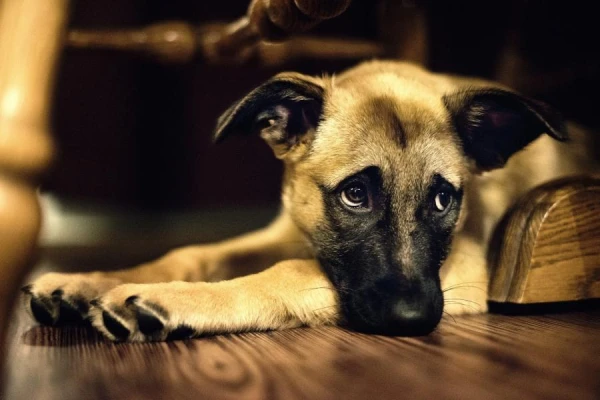
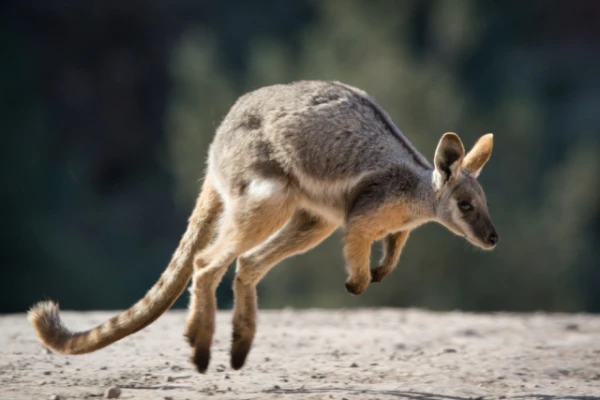
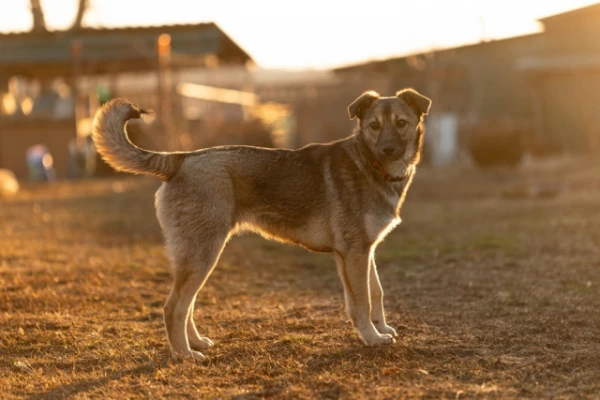



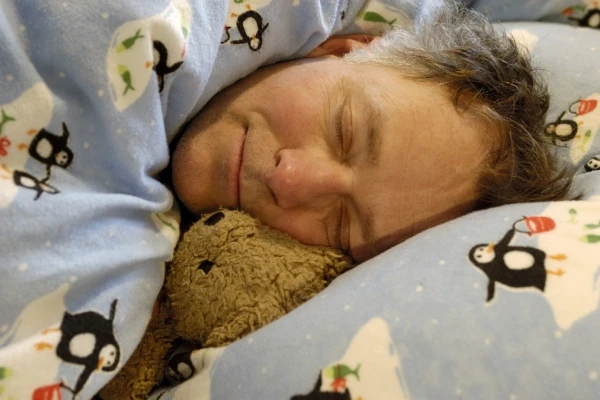




Leave a comment